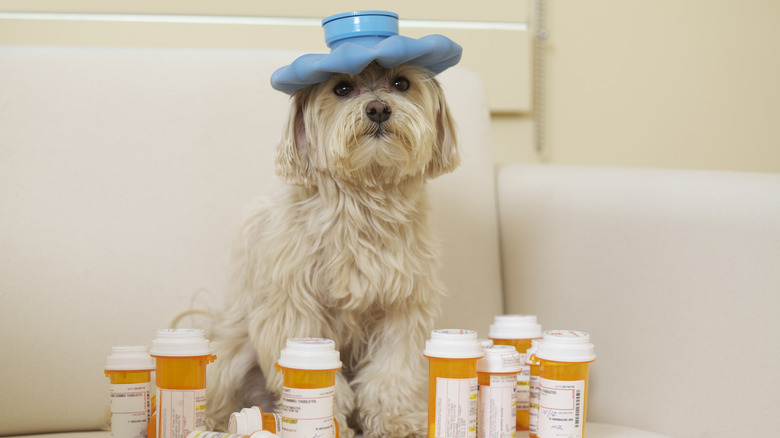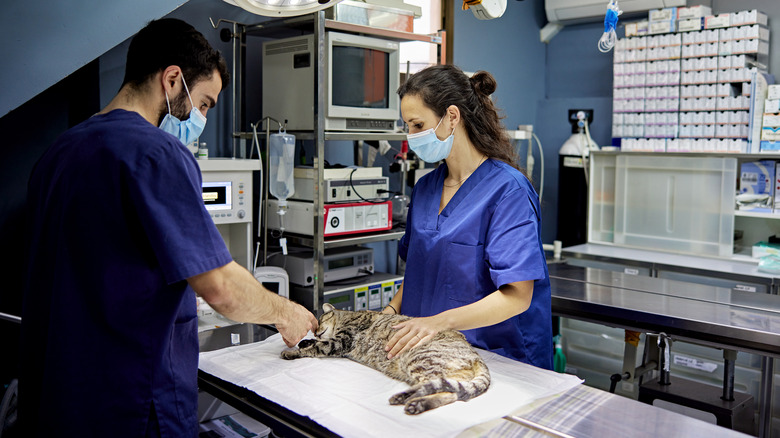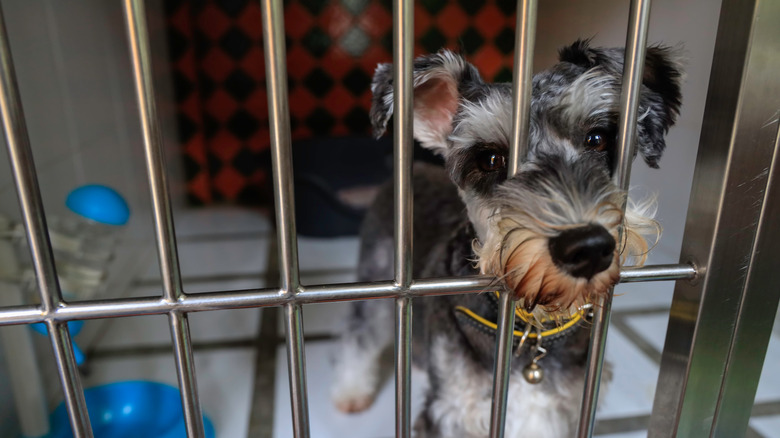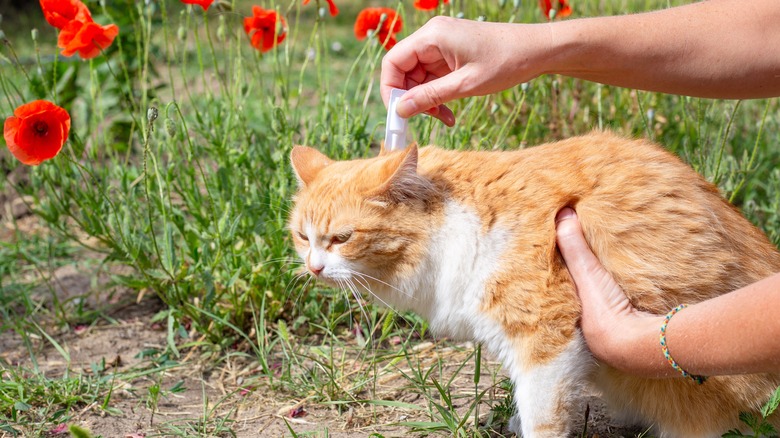The Hidden Costs Of Caring For A Pet (And How To Save On These Common Expenses)
We may receive a commission on purchases made from links.
Having a pet can be a rewarding experience that brings joy and creates a sense of purpose, but despite the highlights, being a pet parent can come with unplanned expenses. These include medications or supplements, emergency or urgent care, boarding, flea prevention or treatment, and in-home repairs. The good news is, there are many ways that you can save money on these common expenses.
Typically, some of the minimum costs associated with dog ownership include food, bowls, a collar/leash, and toys. For a cat, add litter and a litter box to the list. Do you care for a blue belly lizard, hamster, or other small exotic pet? Factor in the price of an enclosure and bedding, too. And, of course, it's always a good idea to have a veterinarian perform a comprehensive exam on your pet at least once a year. Spaying and neutering are also recommended for certain species. These are some of the standard, widely-known costs to care for a healthy pet.
The hidden expenses are those associated with unplanned circumstances that may arise and are common but overlooked among many owners. Pets can have accidents, develop health problems, or require certain accommodations, just like humans can, so it's wise to be prepared in case something unexpected happens to your companion.
Medication or supplements
Picture this: You adopt a Labrador Retriever puppy and enjoy several wonderful, healthy years with him, but after his third or fourth birthday, he has a seizure. A few weeks later, he has another. Your veterinarian diagnoses him with idiopathic epilepsy (cause unknown) and recommends that he be placed on a medication three times a day.
This brain disorder is just one of many pet conditions that might require medication or supplements. Others include arthritis, allergies, digestive problems, and diabetes. Some pet medications and supplements require a veterinary prescription while others can be purchased over the counter. In either case, these items can be highly-priced, especially if you have a large pet in need of multiple medications several times a day.
Pet insurance companies know that medications and supplements are common expenses for many pet owners. That's why they provide some amount of coverage for certain prescription medications and supplements, as long as you purchase the policy before their medical diagnosis. Another way you can save money on these expenses is by using GoodRx for prescription meds and selecting Amazon's Subscribe & Save option for non-prescription meds and supplements.
Emergency or urgent care
Although we all wish our animal companions could be immune to health problems and injuries, many pets will require emergency or urgent care for one reason or another in their lifetime. Common reasons include sustaining a flesh wound or broken bone, eating toxic food, getting bitten by another animal, choking, and seizures. Even the healthiest pets can experience one of these mishaps.
Emergency or urgent veterinary visits can cost $100 to $200 just for a vet to see your pet. This does not include the price of IV fluids, diagnostic care, emergency surgery, overnight care, or anything else your pet might need. These expenses can quickly add up to thousands of dollars, putting pet parents in a difficult position.
So what's the best way to save money on these visits? Most pet insurance plans cover a portion of emergency and urgent care visits, as long as the incident isn't related to a pre-existing condition. You can also reduce the bill by taking your pet to your family veterinarian (if they're open), as opposed to a dedicated emergency facility; emergency care at a standard veterinary practice typically costs less than it does at an emergency veterinary clinic.
Boarding services
In a perfect world, we'd be able to bring our pets on airplanes and in hotels for no charge whenever we travel or have access to a free, trustworthy at-home sitter at all times. To spend less on accommodations for your pet, consider sites like Rover and TrustedHousesitters. In reality, however, many pet owners have to rely on boarding services. Even if you do have a designated sitter, what if you have to leave town suddenly for a family emergency and your sitter won't be available when you need them? You might find yourself with no other choice than to board your pet.
The cost of pet boarding varies depending on the facility and accommodations you choose and the city in which you live. Many standard veterinary practices offer boarding along with their other services. You can also find practices that offer boarding (and sometimes grooming) exclusively. Some facilities charge a daily rate of about $15 for basic boarding, and others charge as much as $100 or more for luxury boarding. Want your fur baby to have extra play time while you're away? That will likely cost more. Another potential expense includes pre-boarding vaccine requirements. Many boarding facilities require that dogs be vaccinated against Bordetella (kennel cough) and cats against FVRCP.
Although pet insurance doesn't typically cover boarding, unless it's for medical reasons, it does cover all or a portion of preventive vaccines. You can also visit a mobile vaccine clinic to save on costs, as these locations sometimes charge less than brick-and-mortar vets.
Flea prevention or treatment
Veterinarians typically recommend some type of flea prevention for dogs and cats, but it's not required by law like the rabies vaccine. This can tempt some owners to want to cut costs by buying preventive products only after noticing fleas on their pet, but this approach could end up being more costly in the long run. Fleas on both dogs and cats can cause flea allergy dermatitis (FAD), tapeworms, or an illness called bartonella – any of which could lead to a hefty veterinary bill (via Merck Veterinary Manual). Year-round flea prevention, however, could be much more affordable.
Just as with boarding, the cost for flea prevention varies, depending on a number of factors. Topical medications usually cost less than oral medications, and flea collars tend to cost less than topical medications. For example, on Chewy, the Bravecto Topical Solution for a 10-pound dog costs $63 for three months of protection while the chewable version costs $73. A Seresto Flea Collar for the same dog costs $60 for eight months of protection.
Yes, pet insurance is a great option to save on flea preventatives, but you can also pay less if you use retailer discounts. Chewy often offers coupons that can be used on flea prevention. This site, along with Amazon and others, also offers the option to save money if you start a subscription for the item.
In-home repairs and replacements
Pets are sweet, but they can also be destructive in a home, resulting in unexpected expenses. Dogs can damage doors after excessive scratching or destroy living room sets after gutting the cushions. Windows and blinds can also be broken or damaged. Cats can wreak havoc in a home as well. They might convert your rug to their own personal scratching post, which can snag the fibers and leave it looking like a shredded mess. Ottomans, accent chairs, and any other furniture item with textured fabric can also fall victim to a feline's claws. Cats may leave accidental scratches on leather furniture, too, as they jump on it.
Depending on what your pet damages, you might have the option to save money with a repair or a "band-aid fix." For example, sofa cushion covers can be resewn and restuffed. Small holes and scratches on cloth furniture can be patched, depending on the fabric. For anything you plan to replace, visit your local thrift store, consignment shop, or Facebook Marketplace, where you can purchase items for a fraction of the cost of buying new.





